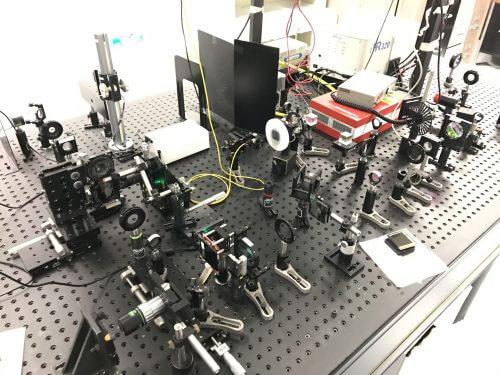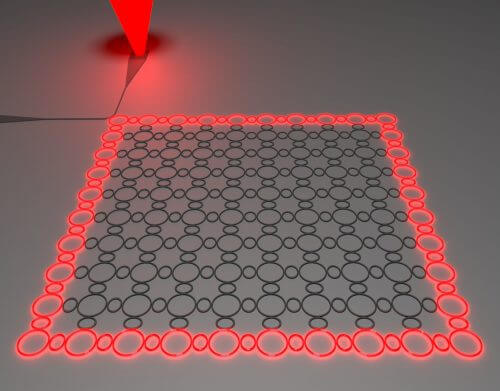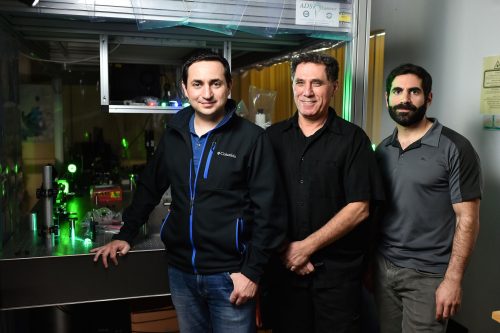Newspaper Science Reports a scientific and engineering breakthrough in the laser field: the creation of a topologically isolated laser. The research, conducted at the Technion and in the USA, has the potential for a revolution in the field of semiconductor lasers and precise sensors

Researchers from the Faculty of Physics at the Technion developed with colleagues from the USA an innovative laser system: a Topological Insulator Laser. The new laser is characterized by significantly higher efficiency and stability than those of similar laser systems and paves the way for a powerful coherent integration of a large number of units into the arena - a challenge that occupies many research groups in the field of semiconductor lasers.
The findings were published in the journal Science in two articles, one of which presents the theory and the other the first experimental system. This is a basic scientific discovery that has far-reaching implications for applications such as photonic devices (diodes for communication, electronic circuits integrated with lasers, etc.), and leading companies in the world of photonics are already showing interest in it.
The groundbreaking research was conducted by Israel Prize winner Prof. Moti Segev from the Technion Physics Faculty with two researchers in his lab - Dr. Miguel Banderas and PhD student Gal Harari - and their partners from CREOL (University of Central Florida), Professors Dimitri Christodoulides and Mercada Hajavikan and their students Stefan Witek, Midia Perto and Jinhan Ren and other scientists from the USA and Singapore.

The research being published now presents the first successful combination of its kind between two different fields in physics: lasers and topological insulators. Topological insulators, which were at the heart of the research of the 2016 Nobel laureates in physics, constitute a new state of matter. They were first discovered for electrons in solids and are characterized by the fact that their interior behaves as an insulator (does not conduct an electric current) but their surface conducts a unidirectional current that is immune to defects, scatters (eg corners) and disorder in the material. Initially, the topological insulators were discovered in the context of conduction in solids, but about a decade ago it was hypothesized that the basic ideas in this field of research may, under substantial changes, be relevant in other physical systems as well. The first of which was an optical system. Already in 2013, Prof. Segev's research group demonstrated the first topological photonic insulator. In this system, light travels unidirectionally around the edges of a two-dimensional array of waveguides without being disturbed by defects or disorder. Now the researchers are demonstrating a new type of laser device, which allows connecting a large number of units to the ring to create a single, strong and uniform laser beam, at a single frequency, which is also immune to defects, sharp edges and disorder. As mentioned, the breakthrough lies in the synergistic combination of the topological features in a laser system.
Research Prof. Segev, who led the research, says that "this is the most important research I have conducted so far, and the publication of the two articles in Science side by side is an unprecedented step." According to him, "the new laser system refutes everything we knew about topological insulators. Until now, it was customary to assume that the unique properties of the topological insulator would disappear in contexts such as laser systems, which must contain gain, but we refuted this assumption in theory and experiment. The photonic topological isolator presents a significant improvement of the laser in terms of efficiency, stability and power. The system we developed is immune to disorder in the material and does not allow the dispersion of the beam or the reversal of its direction. The meaning of this work is first and foremost a thought breakthrough in basic science, and I am happy that it also has many practical meanings."
The current article, which as mentioned connects the physics of lasers and the physics of topological insulators, paves the way for a new family of topological photonic devices that can be integrated into sensors, antennas and other photonic devices. According to Prof. Christodoulides, "It is very exciting to see basic research from which significant and tangible applications will emerge."

The topological isolated laser is based on ordinary materials in the semiconductor world, without the need for magnetic fields or unique magneto-optical materials, so it can be relatively easily integrated into many and varied optical and electronic devices. Prof. Hajavikan said that "in recent years we have found new ways to control light in an unprecedented way. Here we managed, through clever planning, to fool the photons so that they feel as if they are subject to a magnetic field and as if they have spin."
Research professor Moti Segev has won many prestigious international awards in the fields of physics, including the highest awards in the fields of optics and lasers from the American Physical Society (2014) and the European Physical Society (Quantum Electronics Award 2007). He is a member of the Israeli National Academy of Sciences, a member of the American Academy of Sciences and a groom Israel Prize For "exploration of thechemistry and physics research" for the year 2014.
For articles in Science:

One response
It also has a security application and I appreciate that those who need to know and have failed so far in the task will contact Professor Segev and get in touch.